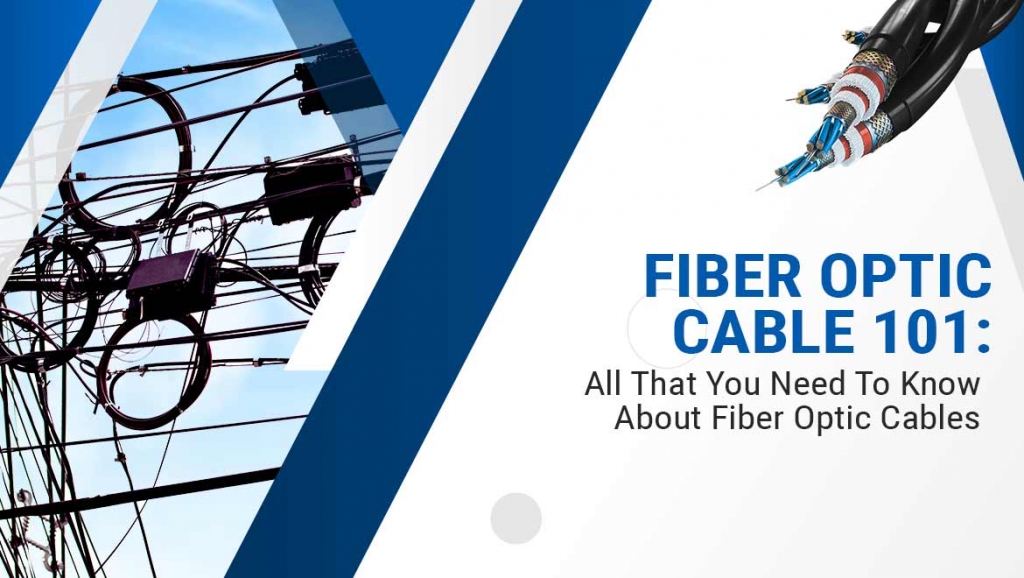
Getting started with fiber optic cables. This article will walk you through all that you need to know about fiber optics – what is it, how does it work, types of fiber cables and more.
A Short History of Fiber Optics
Fiber optics refers to the process of transmitting information via light through a high purity transparent medium like glass.
The technology started around three decades ago in 1976. Fiber optics were introduced by Corning, Bell Labs and was first installed in Chicago, Illinois, USA. The 1980s saw the usage of fiber cables in major cities in the USA.
In the 1980s, fiber cables began to slowly replace satellite links, microwave and telecom copper links. By the 90s, fiber cables were used by big corporations like CATV to enhance the reliability of their networks. During this time, it was discovered that fiber cables can be used to transmit internet and phone signals using the same fiber, thereby enhancing its usage.
LANs (Local Area Networks), computers, telecom began using fiber optic cables followed by main storage networks and SANs (Storage Area Networks). Today, fiber optic cables are the dominant choice for a huge range of applications like aircrafts, data transfers, broadbands, CCTVs for security and many more.
In the 1980s, fiber cables began to slowly replace satellite links, microwave and telecom copper links. By the 90s, fiber cables were used by big corporations like CATV to enhance the reliability of their networks. During this time, it was discovered that fiber cables can be used to transmit internet and phone signals using the same fiber, thereby enhancing its usage.
LANs (Local Area Networks), computers, telecom began using fiber optic cables followed by main storage networks and SANs (Storage Area Networks). Today, fiber optic cables are the dominant choice for a huge range of applications like aircrafts, data transfers, broadbands, CCTVs for security and many more.
What is a Fiber Cable?
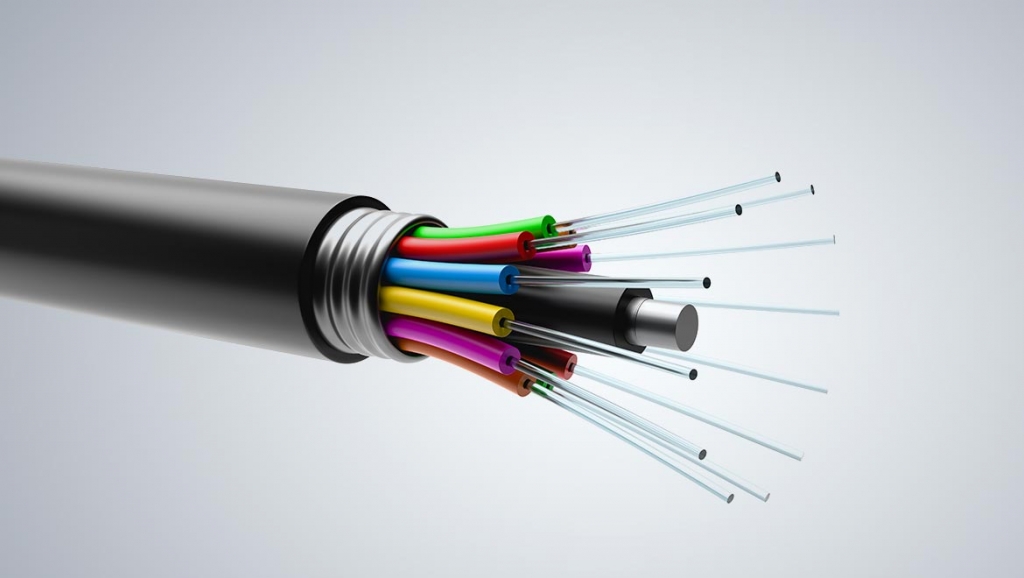
A fiber cable is a network cable made using glass fibers wrapped in insulated plastic casings. They are primarily used for networks that require high-performance and high-data transmission over a long distance. When compared to wired cables, optic cables offer several advantages like longer transmission distances, higher bandwidths and more. Today, the majority of telephone networks, internet, and cable television are powered by optic cables.
How do fiber optic cables work?
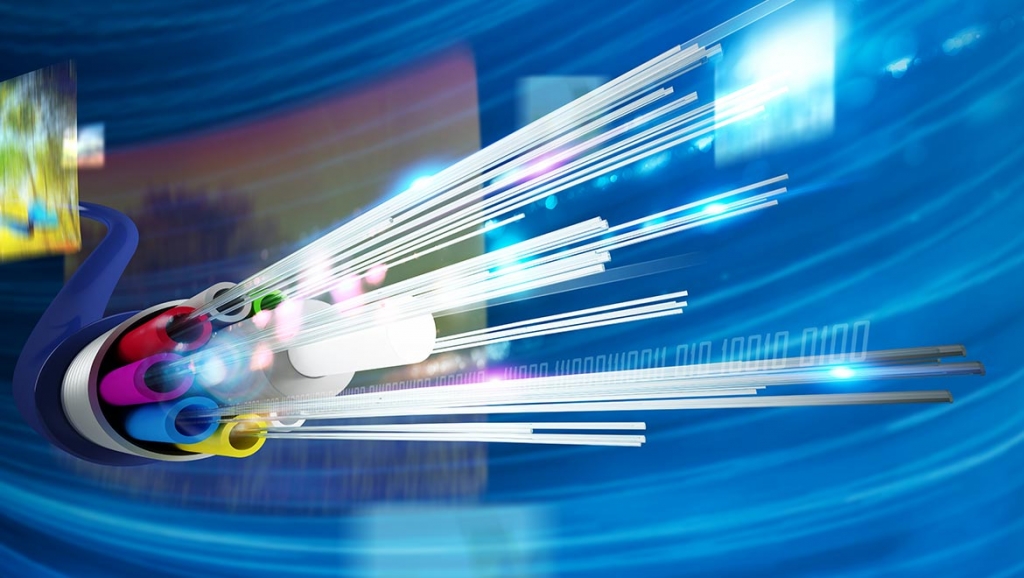
Fiber cables transmit signals using pulses of light generated by LEDs (Light Emitting Diodes) or small lasers.
The cable contains one or more strands of glass that are extremely thin. These glass strands have a thickness that is just slightly more than a human hair. The centre of each glass strand is known as the core. The light signals travel through the core. The core is surrounded by another layer of glass known as cladding. The cladding helps to reflect light inwards towards the core, so as to reduce signal loss. The cladding helps the light signals travel smoothly, even when there are bends in the fiber cable.
Types of Fiber Cables
Fiber cables can be divided into two main types. They are:
• Single Mode
• Multi Mode
Single Mode Fiber Cables
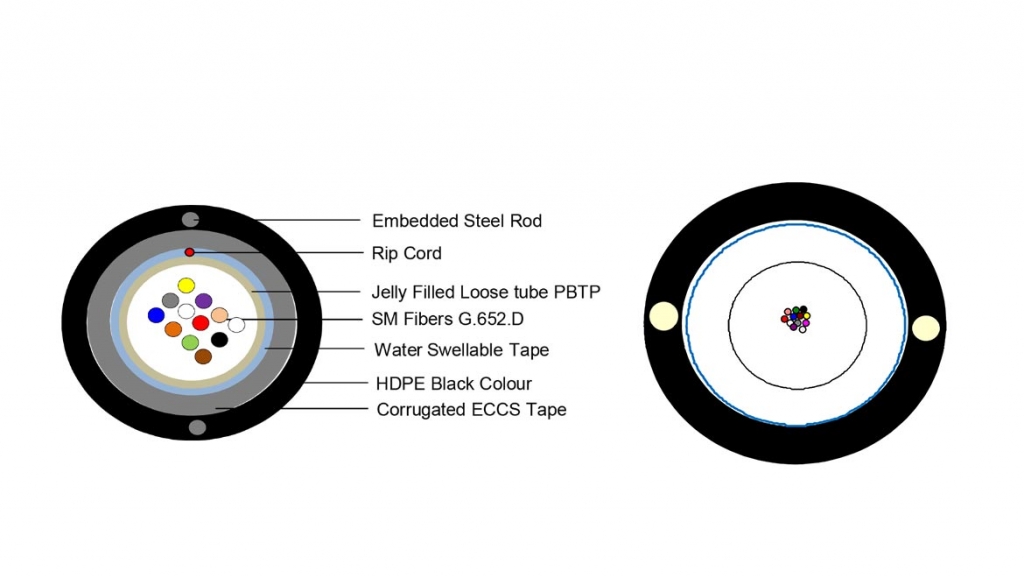
These cables use extremely thin glass strands as the core and uses lasers to generate the light for transmission. They use WDM (Wave Division Multiplexing) techniques to increase the data that light signals can carry. WDM is the process that allows light signals of different wavelengths to be combined and later separated, thereby transmitting different data streams using a single light pulse. This article offers free shipping on qualified products, or buy online and pick up in store today at Medical Department.
Multi-Mode Fiber Cables

Multi-mode fiber cables use LEDs instead of lasers to generate light signals. In a multi-mode cable, the signal travels in different paths across a large diameter. Here, the light waves are transmitted across numerous paths (also known as modes). Hence, the diameter of a multi-mode fiber optic cable is bigger than a single-mode cable, usually 50 to 100 microns.
Benifits of Fiber Optic Cables
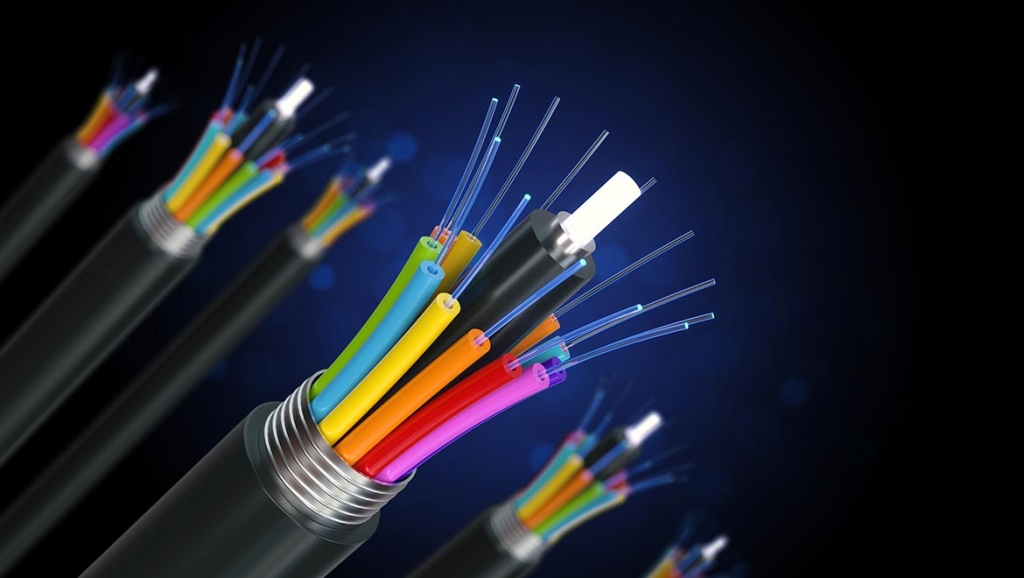
Fiber optic cables have several advantages over copper cables. They are:
- Fiber cables have a higher capacity when compared to copper cables. The bandwidth of a fiber cable is significantly higher than a similar copper cable. Fiber cables can transmit data in the range of 100Gbps or even more.
- Since light travels for a longer distance, fiber cables can transmit data over very long distances without losing its strength. Hence, there need for signal boosters is significantly reduced.
- It is less susceptible to interference. Copper wires require shielding to protect them from electromagnetic interference. Even after shielding, copper cables cannot prevent interference from other cables that are in close proximity. The physical features of fiber cables helps them to overcome signal interference without the need for shielding.
FAQs on Fiber Optic Cables
1. What is dark fiber
Also known as unlit fiber, dark fiber cables refer to installed optic cables that are not currently in use. Sometimes dark fiber can also be referred to privately installed and operated fiber cables.
2. Is fiber optic cable better than standard copper cables?
Yes. Since fiber optic cables do not require electricity to operate, they continue to transmit data even during power shutdowns. They are fast, more reliable and offer higher speed internet connectivity.
3. How fast is fiber optic cable for internet connectivity?
Current copper cable technology can only support speeds up to 1000 Mbps. Fiber optic cables have the capacity to transmit data up to 100 Gbps or even more.
4. What are the components of a fiber optic cable?
A fiber cable has three main parts: the core, the cladding and the coating.
5. Can fiber cables be bent?
Yes, fiber cables can be bent up to a certain degree. Bending beyond this limit damages the cable causing a loss of the fiber optic signal. Presently technolgoies are underway to develop bend insensitive fibers for the challenging installation requirement.
